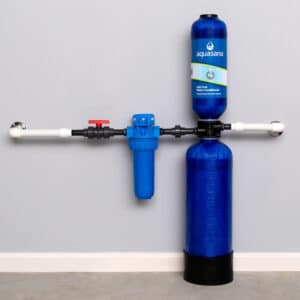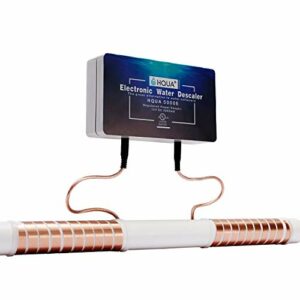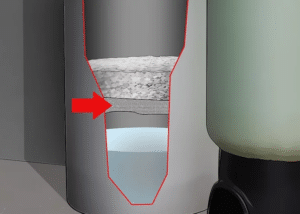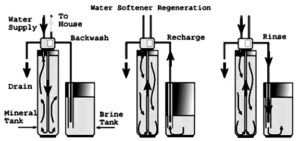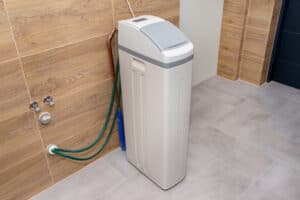Water with a high iron concentration can be problematic to deal with. It will leave orange stains on your kitchen and bathroom appliances, create bacteria-loving sludge deposits, and reduce water flow if the iron buildup is significant.
In particular, people with well water can vouch for the unpleasant taste they get when their water has too much iron. If you have an iron problem on your hands, you’ve likely been doing some research and learned that iron filters and water softeners reduce iron concentrations.
Do water softeners remove iron? A water softener can only remove small amounts of insoluble ferric iron with concentration between 2 – 5 mg/L. Large amounts of iron in water can only be removed by an iron filter.
Water softeners help reduce iron concentrations, but it doesn’t eliminate it. In fact, if you have a substantial amount of iron in your water, your water softener likely won’t be effective at removing most of it.
Furthermore, water softeners only remove ferric (insoluble) iron. Unlike iron filters, water softeners can’t extract soluble (ferrous) iron from your drinking water. For this reason, you may need to use an iron filter instead of, or in addition to, a water softener.
Iron Filter vs Water Softener
The main difference between iron filter and a water softener is how they operate. Water softeners operates on a technology called ion exchange while iron filters work via air injection and oxidation technology.
When deciding between a water softener system and an iron filter for your home, you first need to know whether soluble or insoluble iron particles are present in your water by performing an iron test.
Whereas iron filters effectively reduce the amount of both soluble and insoluble iron, water softeners only remove insoluble iron.
Aside from the significant difference between what types of iron these systems can filter, below are some other noteworthy items to consider.
Advantages of Iron Filters
- Removes manganese and sulfur, helping to improve your water’s taste
- Low maintenance: The media bed lasts six to eight years, and the filter can regenerate automatically
- A natural method, as it doesn’t require sodium, potassium, or chemical additives
- Most iron filters remove a minimum of 10 parts per million of iron
Advantages of Water Softeners
- Offers a multi-purpose function, including reducing calcium and magnesium levels
- More options on the market for water softeners than iron filters
- Some water softener brands target iron, with the ability to remove between five to 10 parts per million
How Iron Filters Work
As its name implies, iron filters target iron removal from your drinking water. It’s effective at eliminating both ferric and ferrous iron atoms. If you’re not a chemist, those names deal with the number of electrons that the iron atoms lose (three versus two).
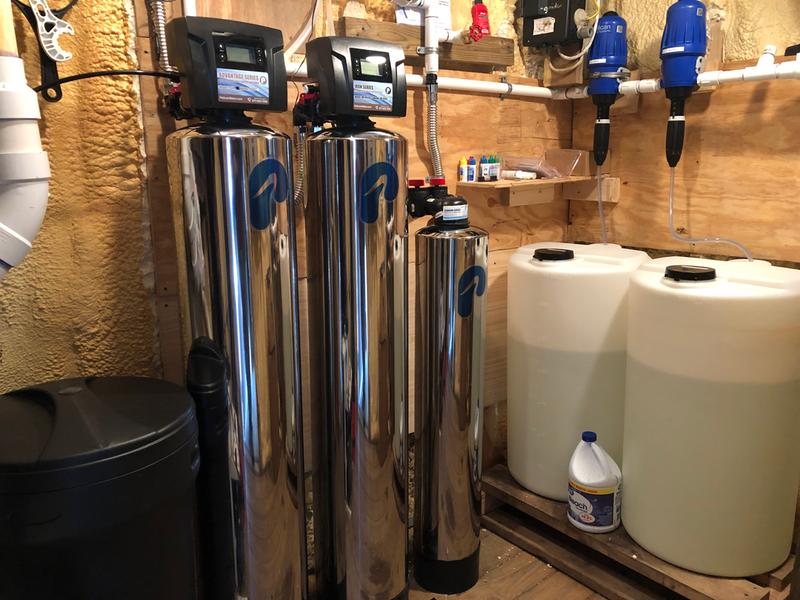
Since iron damages pipes, you’ll want to install your iron filter at the water’s entry point before it travels up through your home. The filter comes as a solo tank with a media bed containing an oxidizing agent.
By infiltrating soluble iron pieces with oxygen, the iron filter forces these particles to become insoluble. Thus, they drop out of the water. The filter then captures the particles before the water enters your home.
When you’re looking at iron filters, make sure to choose one that has a 99.9% iron removal rate. That’s the standard for most filters.
How Water Softeners Work
A water softener’s primary purpose is to make hard water softer by reducing the amount of calcium and magnesium in your water. However, if you pick the correct kind of softener, it naturally filters out other particles, one of which is insoluble (ferric) iron.
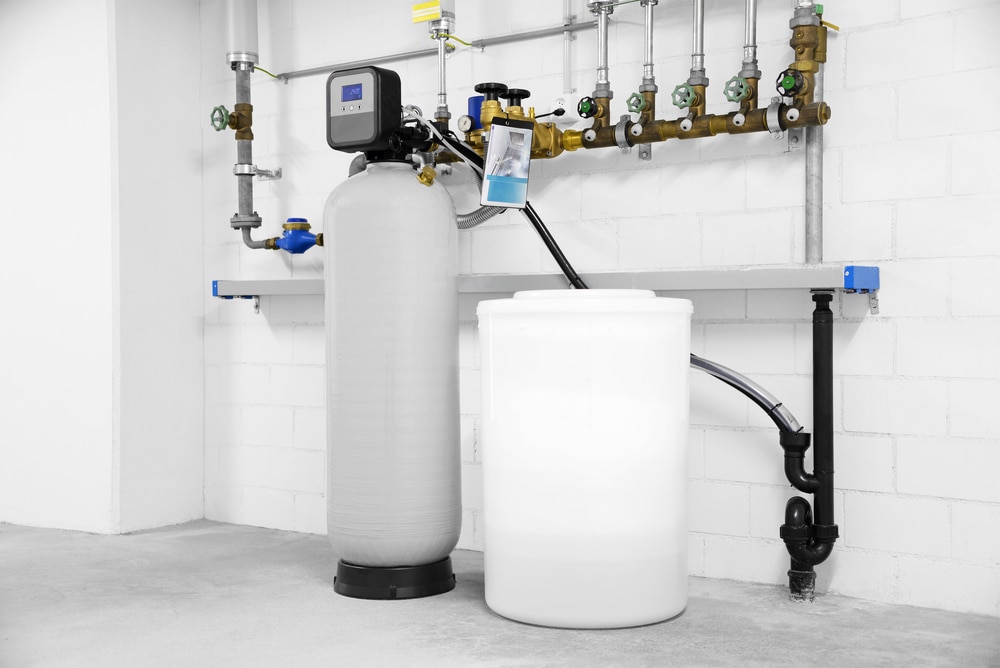
If you want to use a water softener to reduce the iron in your water, you’ll need to choose a salt-based softener, as the salt-free conditioners don’t impact iron.
Like iron filters, you’ll want to set up your water softener where water first enters your home. However, unlike iron filters, you’ll need to install two tanks (resin and brine).
The resin tank acts much like an iron filter, where it’ll gather insoluble iron ions, among other ions. The system will then replace the ions with sodium, which scientists call an ion exchange. As a result, you’ll get to enjoy softer water with a lower iron concentration.
Should You Use Both a Water Softener and Iron Filter?
Installing a well water softener system and iron filter in your home is an excellent choice for well water users who suffer from hard water and high iron concentrations. It can be a costly initial endeavor to buy both a water softener and an iron filter. However, you’ll likely save money in the long run; fixing damaged pipes and appliances isn’t cheap.
If you decide to purchase both systems, it’s important to put in the iron filter before your water softener. That’s because iron filters remove both ferric and ferrous iron particles, thus reducing the wear on your water softener.
Furthermore, you’ll need to have high water pressure so that the water can push through both of these systems and into your pipes to prevent water from trickling out of your faucet.
Conclusion
Although excessive iron is bad for your drinking water, a little iron is important for human function. Iron helps red blood cells transfer oxygen around our bodies, including to our muscles.
However, too much iron is no doubt unpleasant to drink, and it can cause devastating results on your pipes and appliances.
When considering an iron filter and water softener, it’s essential to test your water to know the type of iron you’re dealing with. If you have soluble iron in your water, you must choose an iron filter. Otherwise, you can consider purchasing a water softener or both a softener and iron filter for your home.

